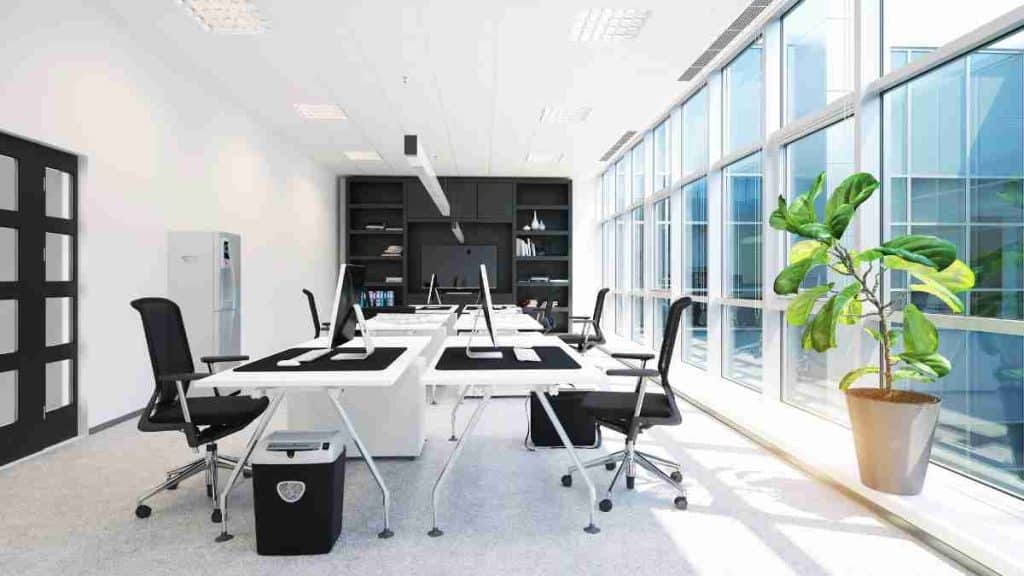A clean office environment not only enhances productivity but also promotes the well-being of employees. A clutter-free, sanitized workplace can reduce sickness, boost morale, and create a more positive space for workers. If you’re looking to improve your office cleaning routine and ensure a healthier space, this arctic;e provides ten must-know cleaning tips that can make a significant difference.
1. Clean High-Touch Surfaces Regularly
High-touch surfaces in the office are breeding grounds for germs and bacteria. These include doorknobs, light switches or shared office equipment. Cleaning these surfaces can help prevent the spread of viruses and other harmful pathogens. Use disinfectant wipes or sprays that are designed to kill germs effectively. Make sure to clean these areas multiple times a day, especially during cold and flu seasons.
2. Sanitize Office Desks and Workstations
While desks may seem relatively clean, they can harbor a significant amount of germs. Workers touch their desks and germs accumulate over time. It’s essential to clean and disinfect not only the surfaces but also the keyboard, mouse, and office phone. Encourage employees to tidy their desks at the end of the day and provide them with sanitizing wipes or sprays to keep their workstations germ-free.
3. Regularly Empty Trash Bins and Recycling Bins
Overflowing trash bins can become a health hazard if left unchecked. Empty trash and recycling bins regularly to prevent the build-up of waste and odor. That is the reason why you should always pay attention to office kitchens and restrooms, as these areas can quickly accumulate trash and food waste. By keeping these bins emptied, you avoid unpleasant odors and reduce the chances of attracting pests.
4. Maintain Clean Restrooms
Restrooms are one of the used areas in any office, and they need to be cleaned and sanitized. High-touch areas such as faucets or paper towel dispensers should be cleaned and disinfected throughout the day. Stock restrooms with enough toilet paper and hand sanitizers to ensure they are ready for use. A clean restroom not only improves hygiene but also contributes to a better employee experience.
5. Keep Office Carpets and Upholstery Fresh
Carpets and upholstery trap dirt or allergens, which can contribute to poor indoor air quality. Regular vacuuming is essential to remove dust and debris from office carpets. Additionally, consider scheduling professional carpet cleaning a few times a year to ensure deep cleaning and to keep the space looking fresh. Upholstered furniture should also be cleaned regularly to remove stains and accumulated dust.
6. Create a Cleaning Schedule for the Office Kitchen
The office kitchen can be a hotspot for germs, especially with food preparation and shared appliances. Clean counters, refrigerators, and sinks daily to avoid bacteria build-up. That’s why encourage employees to clean up after themselves by wiping down surfaces after each use and discarding food leftovers. Also, set aside time for deep cleaning, such as washing out the fridge and disinfecting common appliances.
7. Ensure Proper Ventilation
Proper ventilation is a crucial aspect of maintaining a healthy workplace. Stale air can contribute to poor air quality and increase the risk of airborne diseases. Make sure that air conditioning and heating systems are regularly maintained, and air filters are changed to keep air circulating properly. If possible, open windows to allow fresh air to flow through the office. Having clean air can improve concentration.
8. Use Non-Toxic Cleaning Products
Utilizing cleaning products that are non-toxic and free from harsh chemicals is a healthier choice for the workplace. Many traditional cleaning agents contain substances that can cause respiratory issues, particularly in indoor environments. Opt for natural or eco-friendly cleaners that are just as effective but safer for employees. Products with natural ingredients are great alternatives to chemical-based cleaners.
9. Wipe Windows and Glass Surfaces
Windows and glass partitions can accumulate dust or streaks, diminishing the appearance of your office. Regularly clean windows to keep them clear and enhance the natural light entering the office. Clean glass partitions or other reflective surfaces to ensure a bright, welcoming environment. This not only keeps the office looking tidy but also promotes a positive space and reduces stress among employees.
10. Encourage Personal Responsibility for Cleanliness
Encourage employees to take responsibility for their workspace by organizing their desks, wiping down their areas, and keeping common areas tidy. Set up guidelines for maintaining cleanliness and encourage team members to respect shared spaces. Furthermore, having a clean workspace can have a direct impact on productivity, so fostering a culture of cleanliness helps everyone stay healthy and engaged.
Clean Spaces, Confident Workplaces!
Maintaining a clean office is crucial for employee well-being. By following these tips, a productive environment will be fostered. From sanitizing high-touch surfaces to using non-toxic products, each tip supports a healthier workplace. Encouraging personal responsibility among employees helps maintain cleanliness. With the right practices in place, an office will be a space of comfort and confidence.
